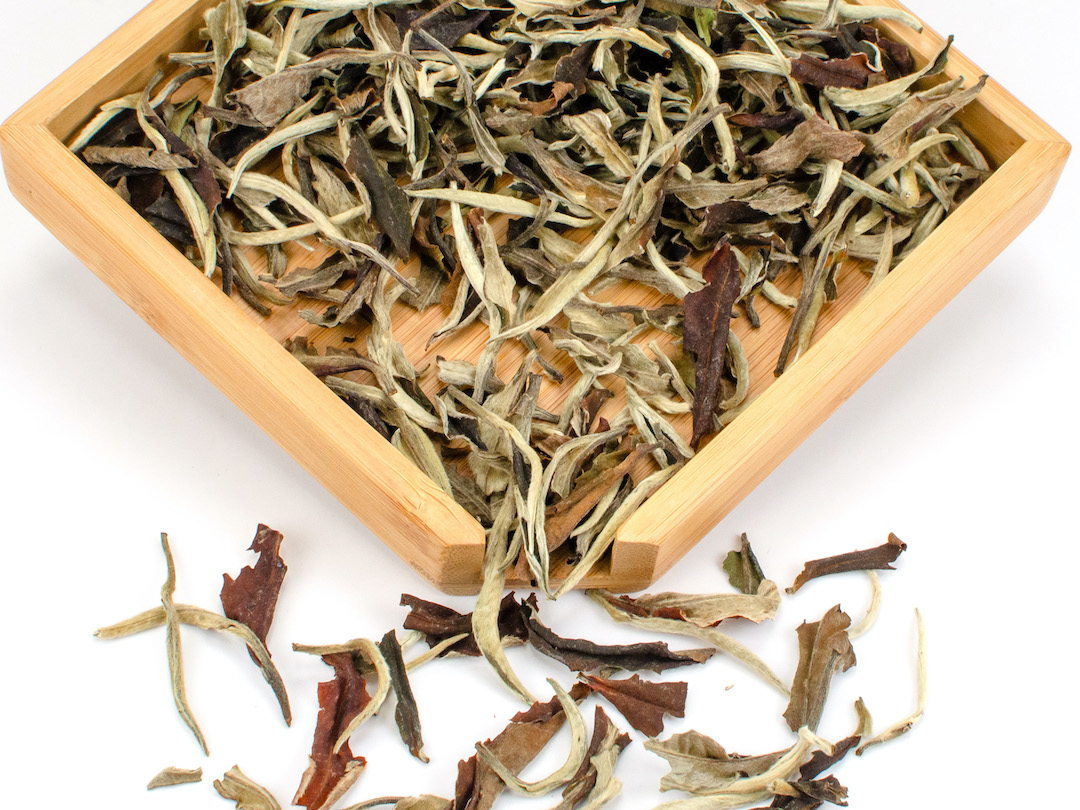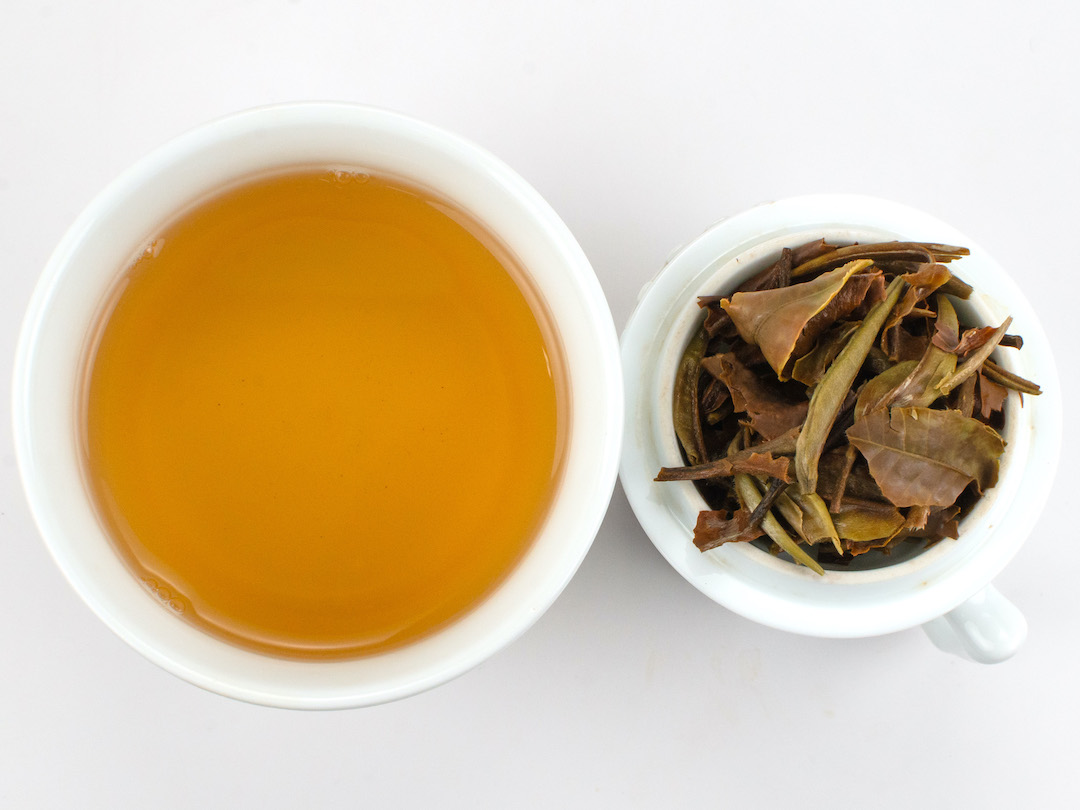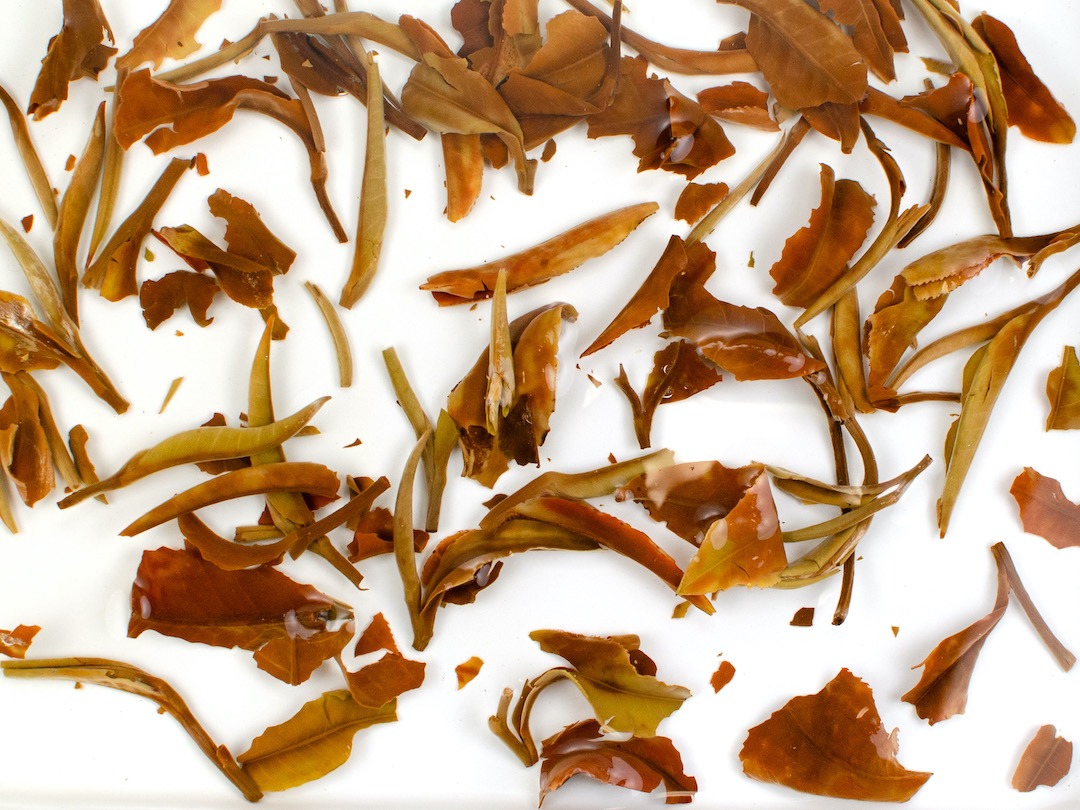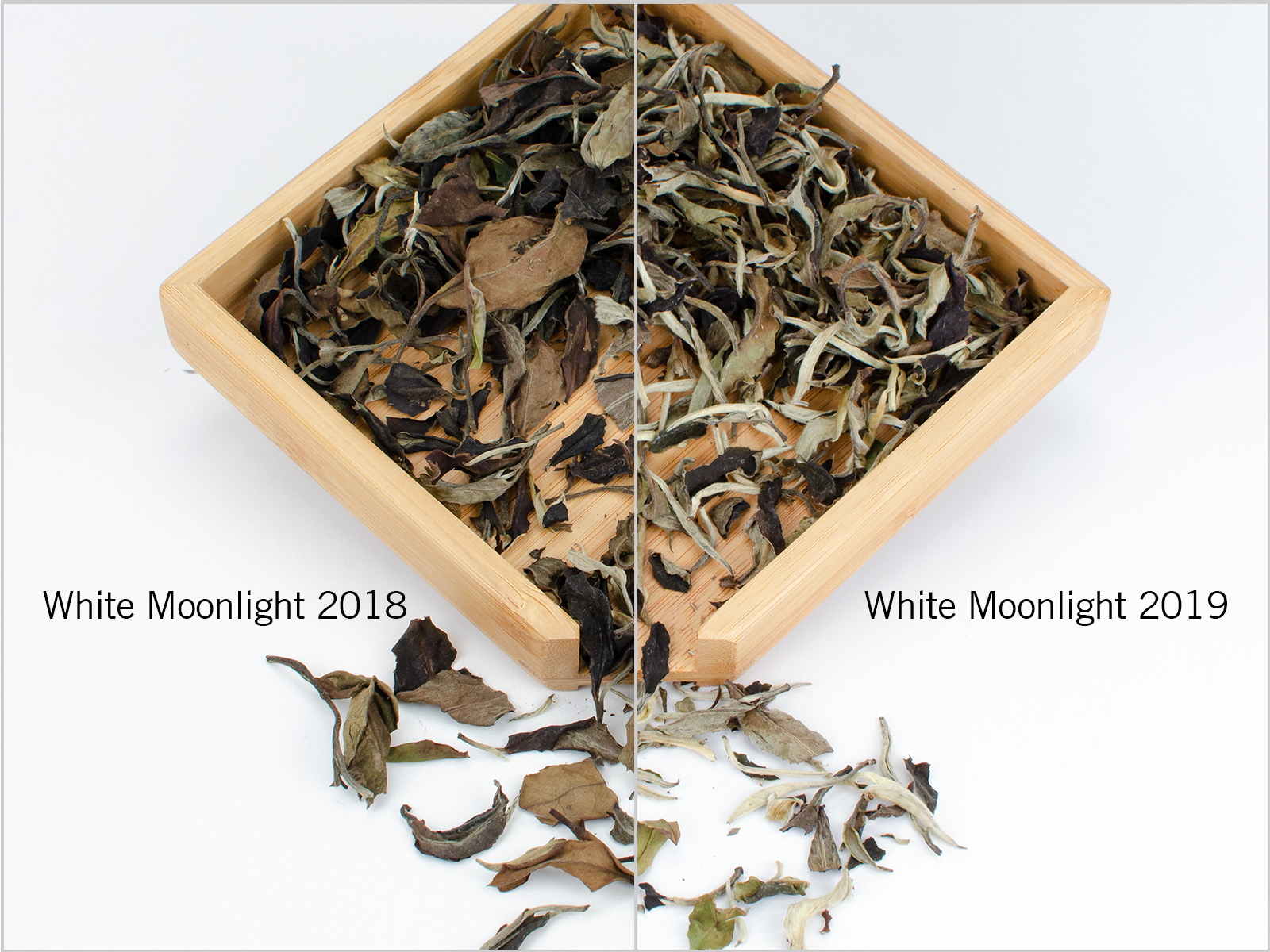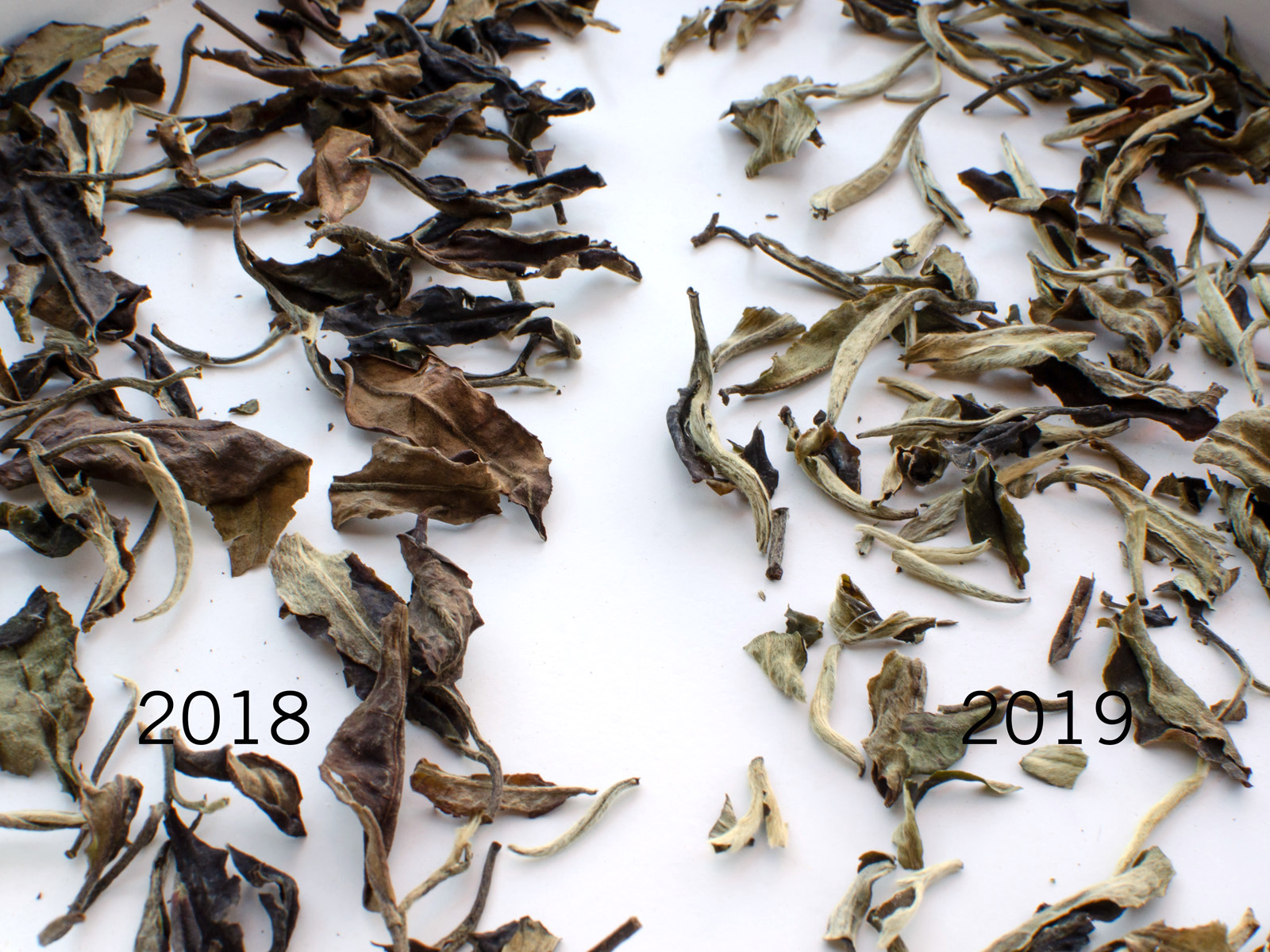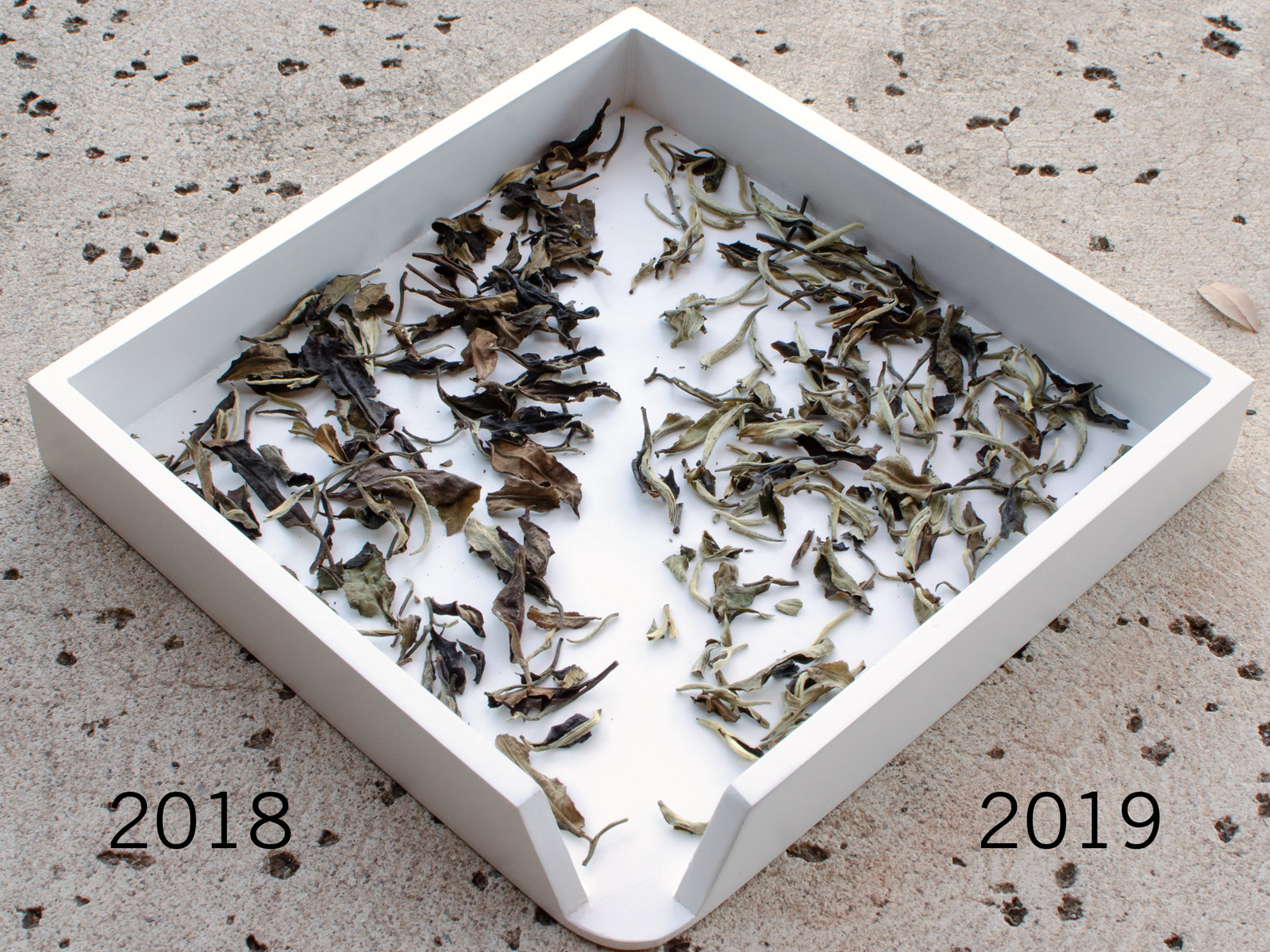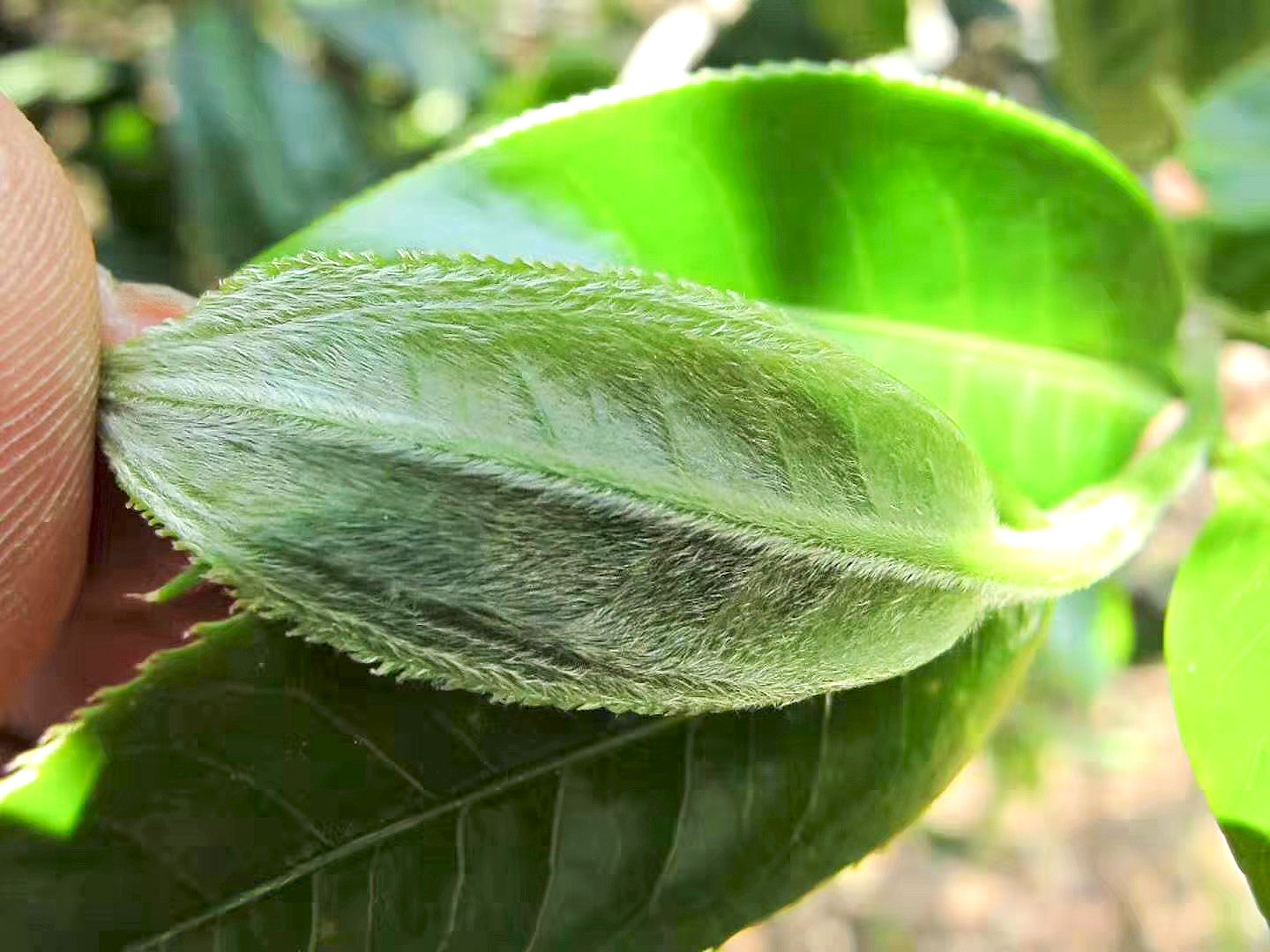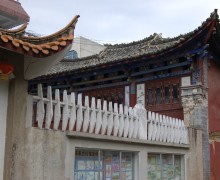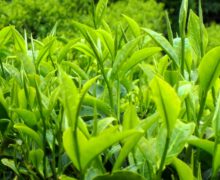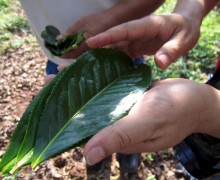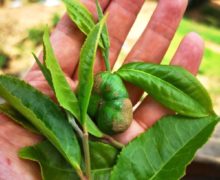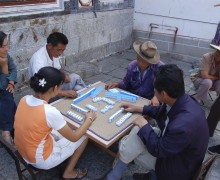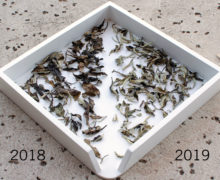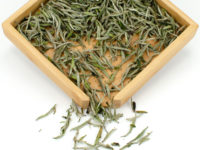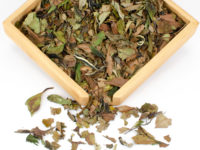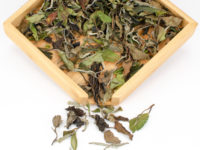Yue Guang Bai (White Moonlight)
Yunnan White Tea 2023
Unique ‘dark’ withering process by slow natural air-drying develops an unusually smooth flavor from leaves and buds that would otherwise have been used for high-end sheng puer. Particularly light and smooth, very popular for its complex wildflower aromatics and deep sweet fruity flavors.
- Tea Origin
- Jinggu County, Pu'er City, Yunnan Province, China
- Tea Bush
- Yunnan Daye Quntizhong (Yunnan Large Leaf Heirloom Tea Tree)
- Tea Maker
- Gong Liping and Ran Yijun
- Harvest Time
- April
- Plucking Standard
- One bud, one leaf
The tea buds and leaves used for White Moonlight normally would have have been made into high-end sheng puer. However, they were instead put through a unique ‘dark’ withering process by slow natural air-drying, which developed an unusually smooth flavor similar to white tea.
The clean and crisp olive-oil colored brew possesses a rich aroma similar to wulong with complex wildflower aromatics. Its sweet and woodsy flavors are especially deep and lingering. This Yunnan White Tea is particularly light and smooth compared to a sheng puer, and is an excellent choice for new puer drinkers as well as white tea enthusiasts. White Moonlight’s leaves are known for their motley dark-and-light coloring, and this is the easiest way to pick the tea out.
Though normally harvested in late February or early March, in recent years Yue Guang Bai has been harvested almost a month later in late March and early April. Persistent drought in Yunnan has made the tea buds grow more slowly and take longer to mature in the spring. However, these drought conditions have created a tea with a deeper and more intense flavor. The longer growing period means the leaves were exposed to more sunlight, and in response they produced more antioxidants.
Unique Slow Drying Process
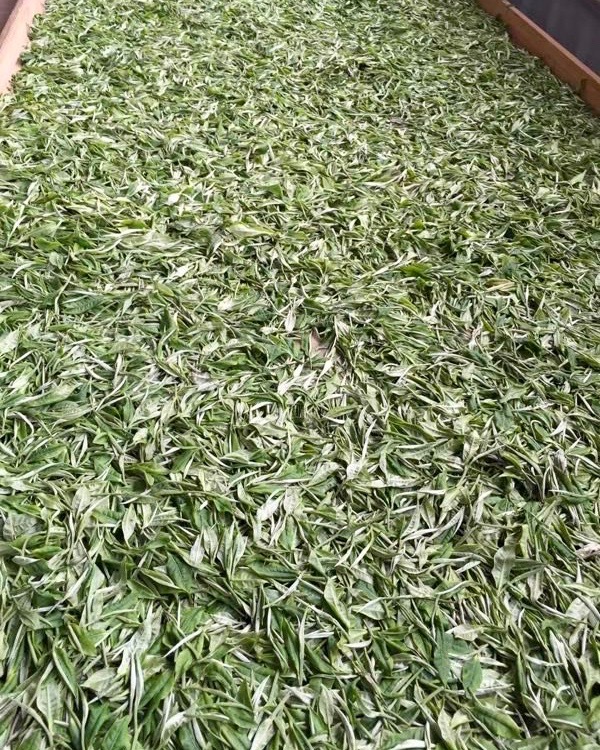
Yue Guang Bai leaves are not withered in the typical hot noon sunlight like most teas. Rather, they are withered indoors or can even be withered outside at night (poetically speaking) “under the moonlight,” if there’s a nice dry night-time wind picking up over the cooling land. This unusual method of manufacture necessitates careful attention from the tea maker as it withers over approximately 24 hours. The leaves need to have air flow maintained over them to avoid molding. However, the careful process is well worth the effort. This “dark wither” is thought to give the tea a very soft character without losing its depth.
You can learn more about White Moonlight’s processing and nomenclature on our tea blog.
Origins and tea cultivation in Jinggu
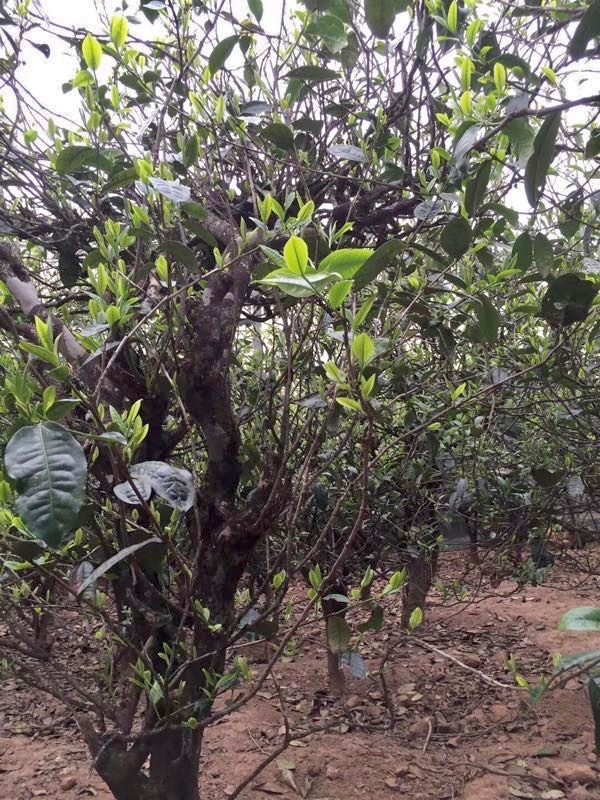
The tea leaves that are used to make Yue Guang Bai (White Moonlight) come from an altitude of approximately 1500 meters high in the mountains of Xiao Jinggu in Yunnan Province. Jinggu County is the largest forested county in Yunnan and it grows some of the richest mao cha available. It is also known for producing sweet Chinese dates. The local tea trees have new growth that is covered in very fuzzy white hairs on the undersides of the leaves. This is easily seen in the young one-bud-one-leaf pluckings used in Yue Guang Bai. Made from tea trees rather than tea bushes, traditional White Moonlight can be infused more times while still providing good flavor and aroma.
The tea gardens where White Moonlight grows are surrounded by popular local crops, commonly mango, which have an impact on the aroma and flavor of the tea leaves. The plucking standard for this cake is one bud to one leaf.
No chemical fertilizer, pesticide, or herbicide was used in the production of this tea. Click here to read more about our promise to fair trade and the environment.

